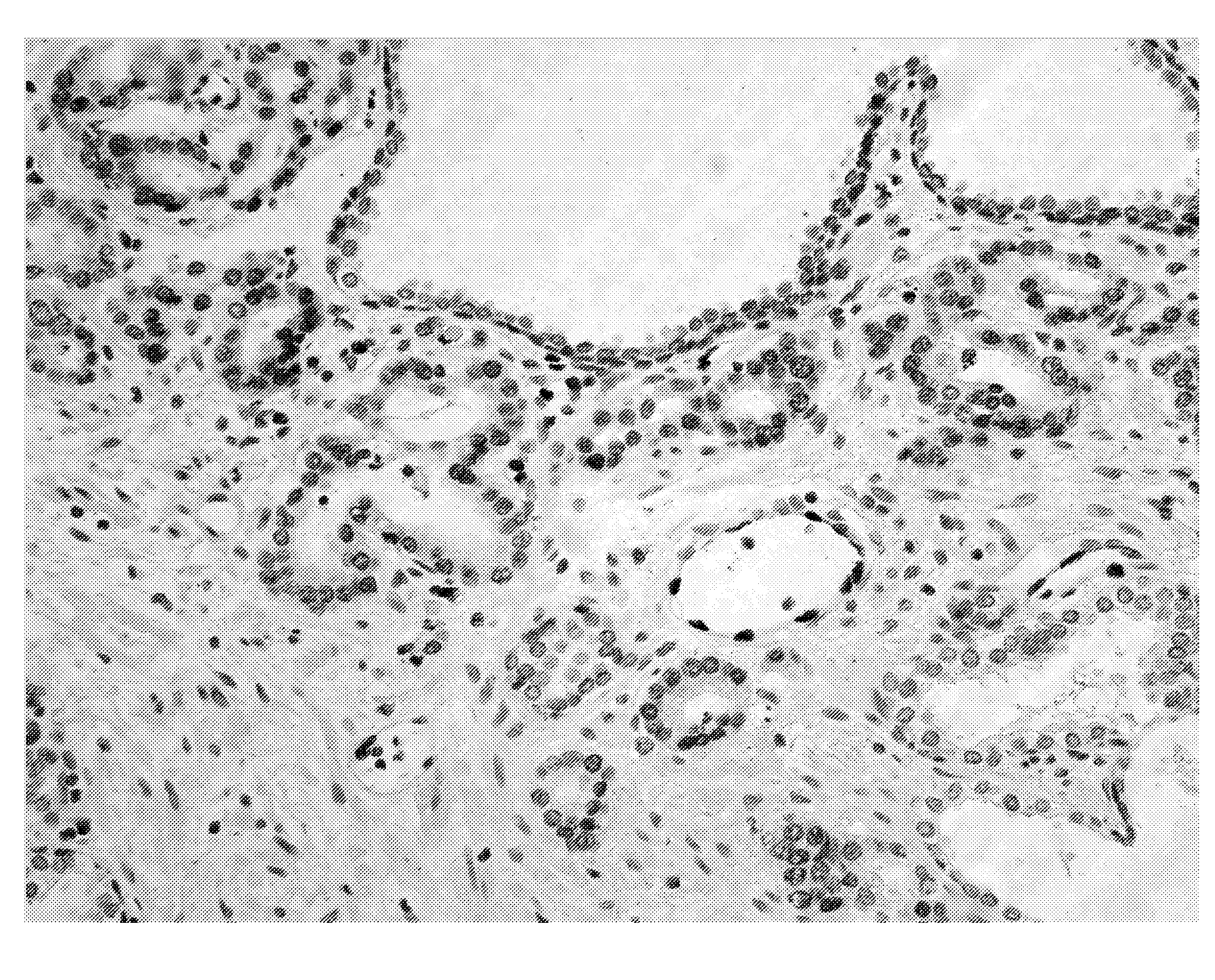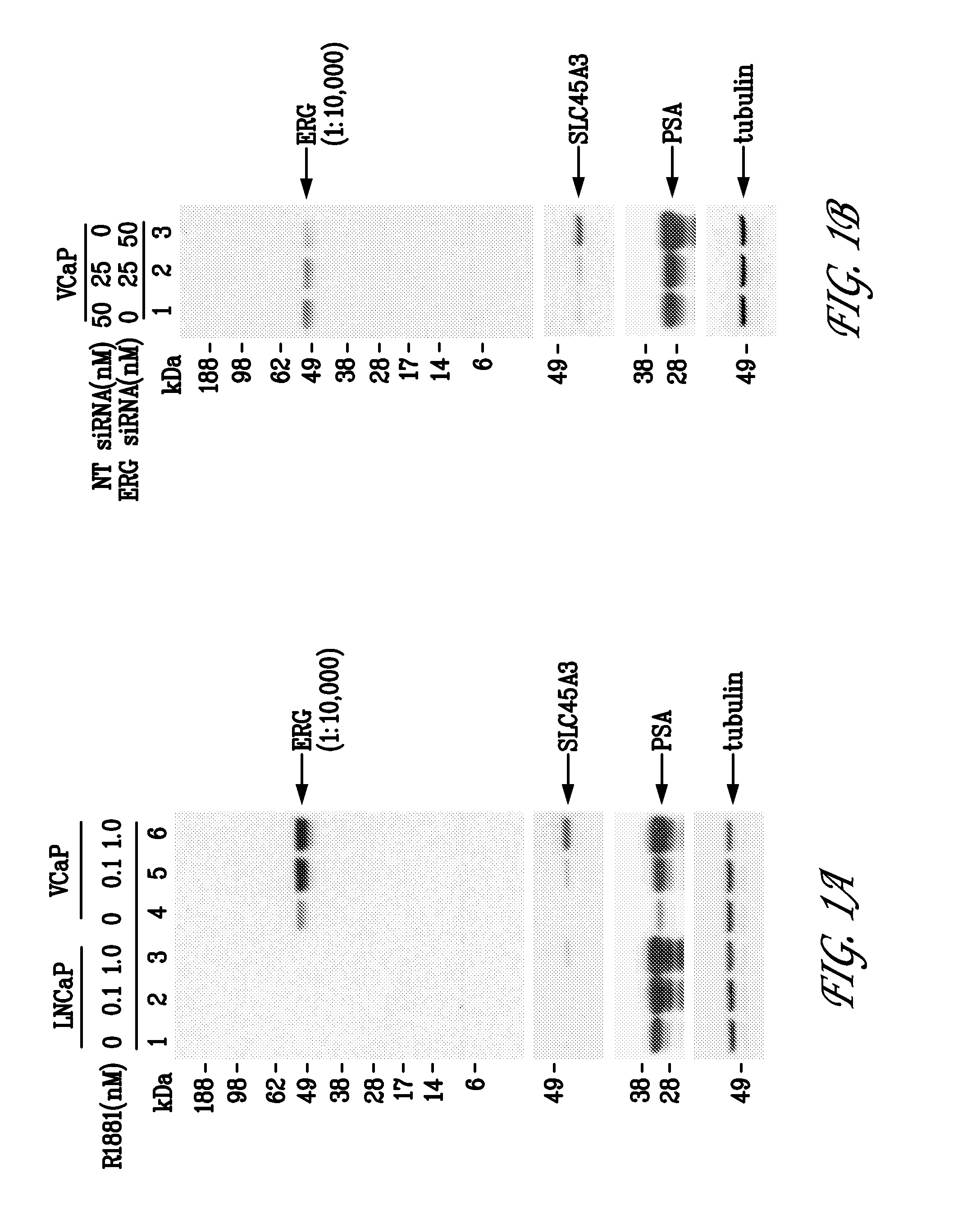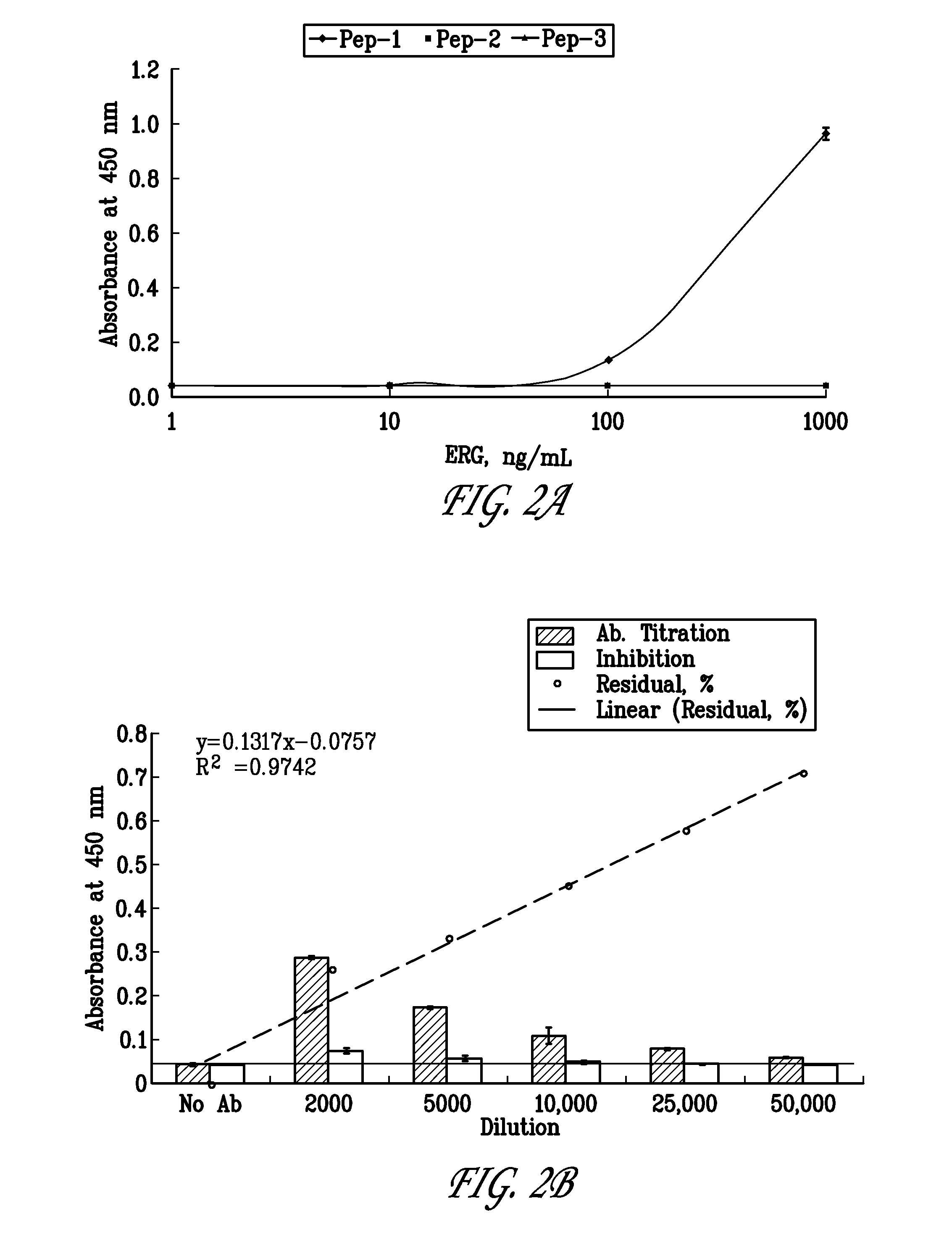Erg monoclonal antibodies
a monoclonal antibody and antibody technology, applied in the field of erg monoclonal antibodies, can solve the problems of difficult pathology in diagnosing prostate cancer, limited clinical diagnosis of molecular markers, and no antibody for detecting erg in clinical specimens
- Summary
- Abstract
- Description
- Claims
- Application Information
AI Technical Summary
Benefits of technology
Problems solved by technology
Method used
Image
Examples
example 1
9FY Antibody Generation
[0104]The hybridoma clone 9FY was obtained by immunizing Balb / C mice with a chemically synthesized polypeptide having amino acids 42-66 of SEQ ID NO:1 and a cysteine residue added at either the N- or C-terminus to keep the —COOH free (unconjugated). The immunizing polypeptide was conjugated to keyhole limpet hemocyanin (KLH) and injected into the mice with an adjuvant at three separate injection sites at three week intervals. The first injection used Freund's complete as the adjuvant. The second and third injection used Freund's incomplete adjuvant. Serum bleeds were assessed for binding to the immunizing polypeptide using a direct ELISA screen. Mice with the highest titer were chosen for the first hybridoma fusion step. Eight positives clones were confirmed by ELISA and supernatants were analyzed by immunoblot assays using ERG3 protein heterologously expressed in HEK-293 cells. Two of the clones were found to be positive in the immunoblot assay. One of the ne...
example 2
9FY Antibody Specifically Recognizes ERG Protein in Prostate Cancer Cells
[0105]VCaP cells (Korenchuck et al., 2001, In Vivo, 15:163-68) are a human prostate cancer cell line that over express a TMPRSS2 / ERG fusion frequently detected in human prostate tumors. In VCaP cells, endogenous ERG gene transcription is controlled by the androgen inducible TMPRSS2 promoter. LNCaP cells are a human prostate cancer cell line that do not harbor a TMPRSS2 / ERG fusion and do not express detectable levels of ERG.
[0106]1. Western Blots
[0107]LNCaP (ATCC #CRL-1740) and VCaP cells (ATCC, #CRL-2876) were grown in RPMI-1640 (ATCC; #30-2001) and DMEM medium (ATCC; #30-2002), respectively, supplemented with 10% fetal bovine serum (ATCC; #30-2020) and 2 mM glutamine. LNCaP and VCaP cells (2×106) were seeded onto 10 cm dishes and maintained for five days and three days, respectively, in media with 10% charcoal-stripped fetal bovine serum (c-FBS; #100119 Gemini Bio-Products, Calabasas, Calif.). For androgen ind...
example 3
Immunohistochemical Staining in FFPE Specimens
[0122]The 9FY antibody was also tested in formalin-fixed paraffin embedded (FFPE) human prostate specimens. Radical prostatectomy specimens were fixed in formalin and embedded as whole mounts in paraffin. Each prostate was sectioned at 0.22 cm intervals in a transverse plane perpendicular to the long axis of the posterior surface of the prostate and completely embedded as whole mounts. The sections were analyzed for immunohistochemistry (IHC) staining on four-micron sections of the whole-mounted blocks.
[0123]The tissue sections for IHC were prepared as described previously (Furusato et al., 2007). Slides were incubated with 1:1200 9FY antibody. VECTOR® VIP (Vector Laboratories, Burlingame, Calif.) (purple) was used as chromogen substrate and the slides were counterstained with hematoxylin. IHC revealed nuclear staining of prostate tumor cells that is consistent with the sub-cellular localization of the ERG transcription factor (FIGS. 5A-...
PUM
| Property | Measurement | Unit |
|---|---|---|
| dissociation constant | aaaaa | aaaaa |
| temperature | aaaaa | aaaaa |
| concentration | aaaaa | aaaaa |
Abstract
Description
Claims
Application Information
 Login to View More
Login to View More - R&D
- Intellectual Property
- Life Sciences
- Materials
- Tech Scout
- Unparalleled Data Quality
- Higher Quality Content
- 60% Fewer Hallucinations
Browse by: Latest US Patents, China's latest patents, Technical Efficacy Thesaurus, Application Domain, Technology Topic, Popular Technical Reports.
© 2025 PatSnap. All rights reserved.Legal|Privacy policy|Modern Slavery Act Transparency Statement|Sitemap|About US| Contact US: help@patsnap.com



